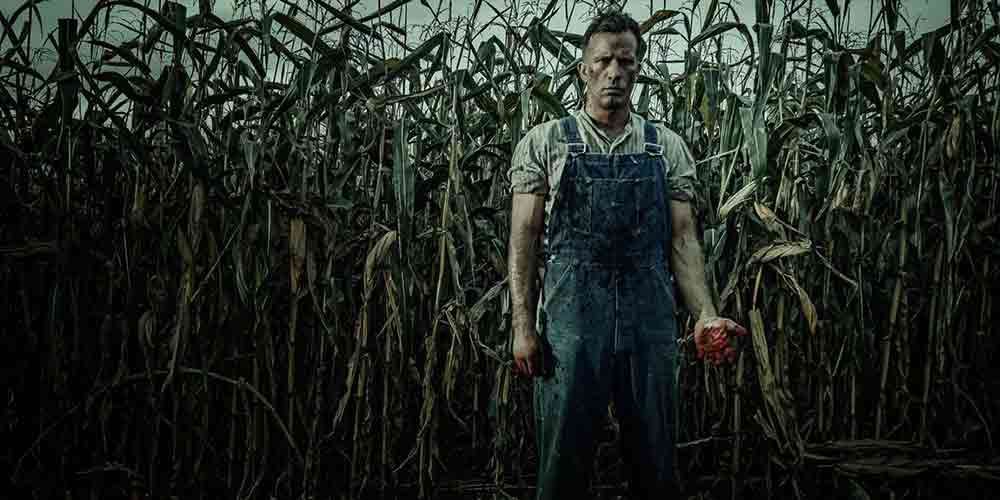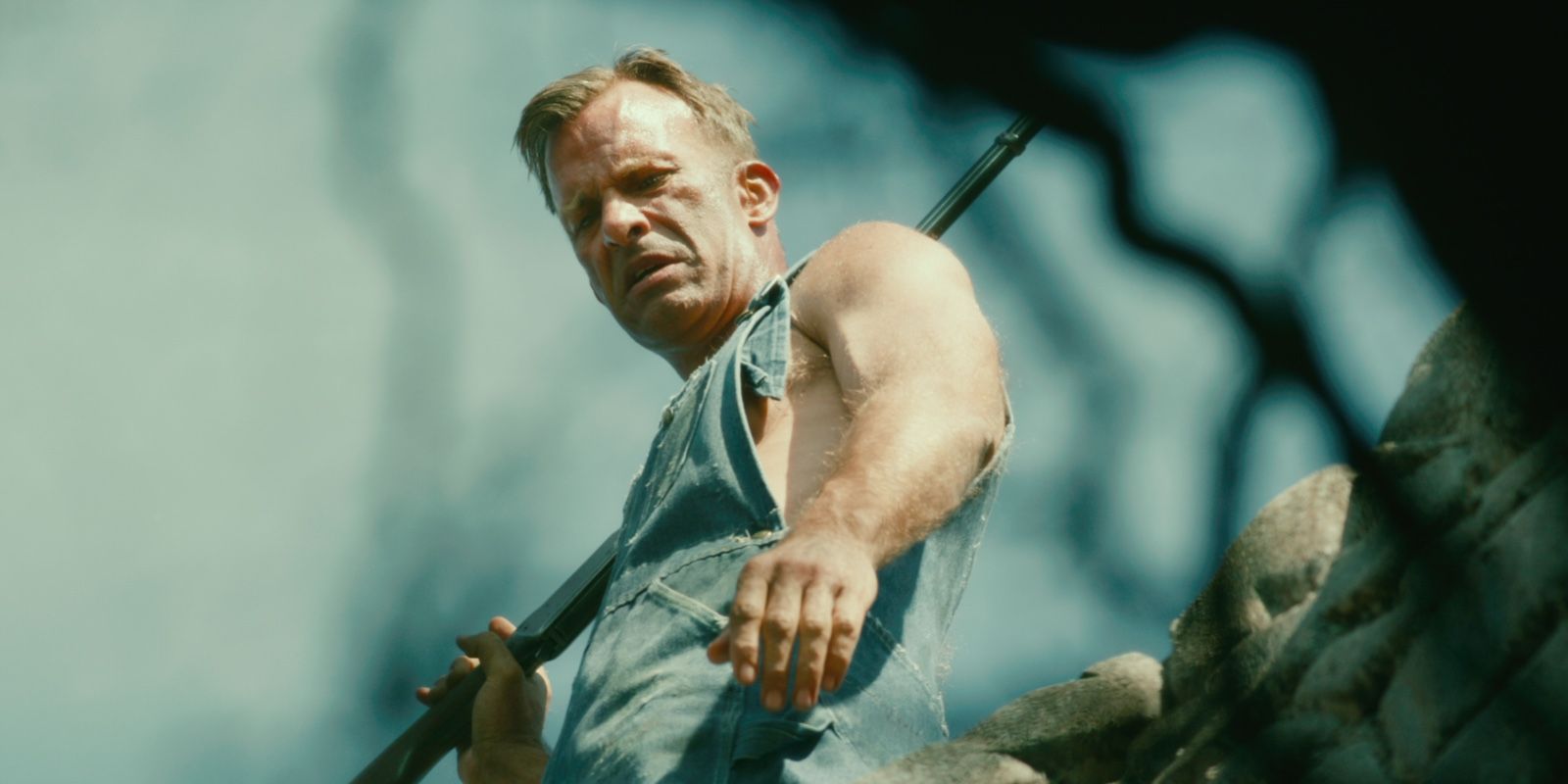Based on the first of four novellas included in Stephen King’s Full Dark, No Stars, 1922 is a Southern gothic retelling of Edgar Allen Poe’s The Tell-Tale Heart. Featuring an unreliable narrator and a great deal of question as to whether what happens is real or supernatural, the story of 1922 is a slow-burn tale of familial strife and the darkness that exists within man.
Zak Hilditch, also known for Rattlesnake (2019), took Stephen King’s story and adapted it into a Netflix film, clearly crafted as a labor of love. Thomas Jane (The Mist) stars as the main character, Wilfred James, a Nebraska farmer who conspires to murder his wife in an effort to keep her from selling the farm. The story follows Wilf and his son Henry as they try to get away with murder and live with the consequences of what they’ve done.
While the Netflix film is fairly true to King’s original work, there are some changes between the two stories. Hilditch takes several lines verbatim from the book, which gives a nice nod to readers, but he also chooses to twist the plot somewhat and adjusts the order of the scenes. The most notable change, however, is that Hilditch chose to write a new ending for the story.
Biggest Differences Between the Book And The Movie
The first major difference audiences notice between the novella and the film of 1922 is that this film really moves. The book is a slow-burn story that starts with a lot of lead-up the main action and a long decrescendo after Arlette’s murder. The film gets to Arlette’s death very quickly, with very little lead-in time. This makes sense in terms of making a 100-minute film, but it does take away from a lot of the character building that the book gives the reader. It makes it more difficult for audiences to identify with Wilf and Henry and to hate Arlette. Ideally, when Wilf and Henry kill Arlette, the audience should want her dead too, but there’s not quite enough in the film to deliver that feeling.
The next change is small. In order to make the film move better in a visual medium, Hilditch takes several lines from throughout the novella and uses them in the beginning to replace the longer lead-in time that the book has. This leads to a slight feeling of confusion for readers watching the film for the first time who may notice the timeline shift slightly. That being said, direct line quotes throw a bone to readers who enjoy picking up those small nuggets, and also ensure that the film carries a similar tone to the book.
Hilditch also makes a few minor adjustments to the story just to create better shots. The best example of this is when he tweaks Wilf’s rat-bite hallucination of the dead Arlette to occur so that he falls down a flight of stairs. While a lower level to the house is never mentioned in the book and Wilf never falls down any stairs, the visual of the dead Arlette and her army of rats descending down the staircase towards Wilf makes for a much more dynamic scene.
He also makes other minor changes like removing the stakes that are meant to be surrounding the old well, keeping the cows from falling in, and not explaining certain things to the audience, like the fact that it’s an old slop well, not the source of the family’s main drinking water. While these details probably don’t matter too much to the main story, audiences accustomed to picking out plot holes will notice these details and ask questions that can only be answered by reaching for the novella.
Finally, the largest change that Hilditch makes in his film adaptation of 1922 is rewriting the story’s ending. While the ending in King’s novella starts out nebulous and leaves a lot up to interpretation it ends conclusively and brutally. Hilditch, however, decides to make the ending a bit more up in the air, and leaning a bit more towards the supernatural than King’s story. Hilditch’s take emphasizes the ghost story aspect, while King focuses a great deal more on the mental manifestation of guilt and its impact on the psyche.
Stephen King’s work has been adapted for film many times, some great and some terrible, but 1922 is a solid film that holds mostly true to the book. 1922 does a good job of keeping with the source material and producing a film that gives the audience the same feel of the book, without taking out too much of the written story.


